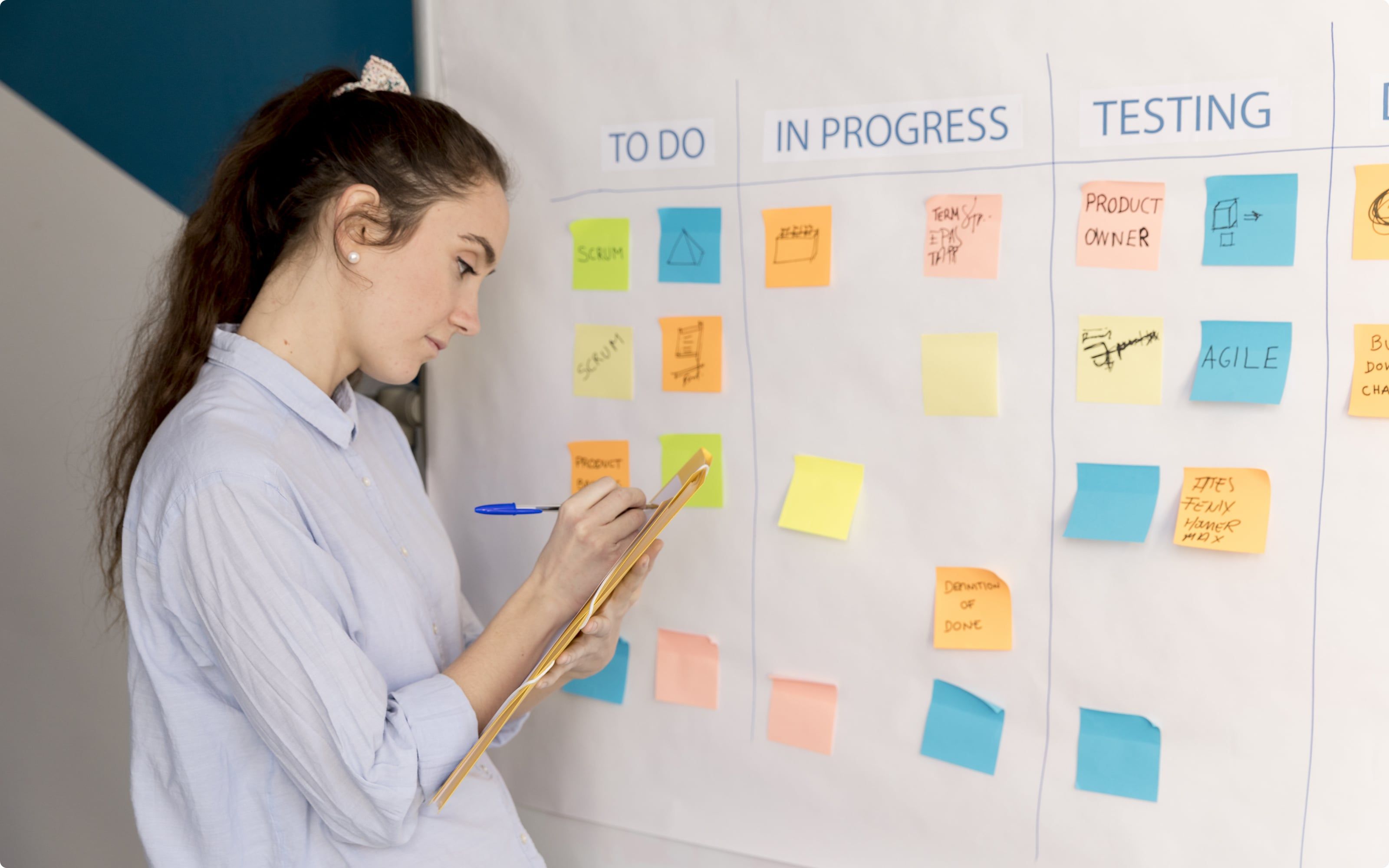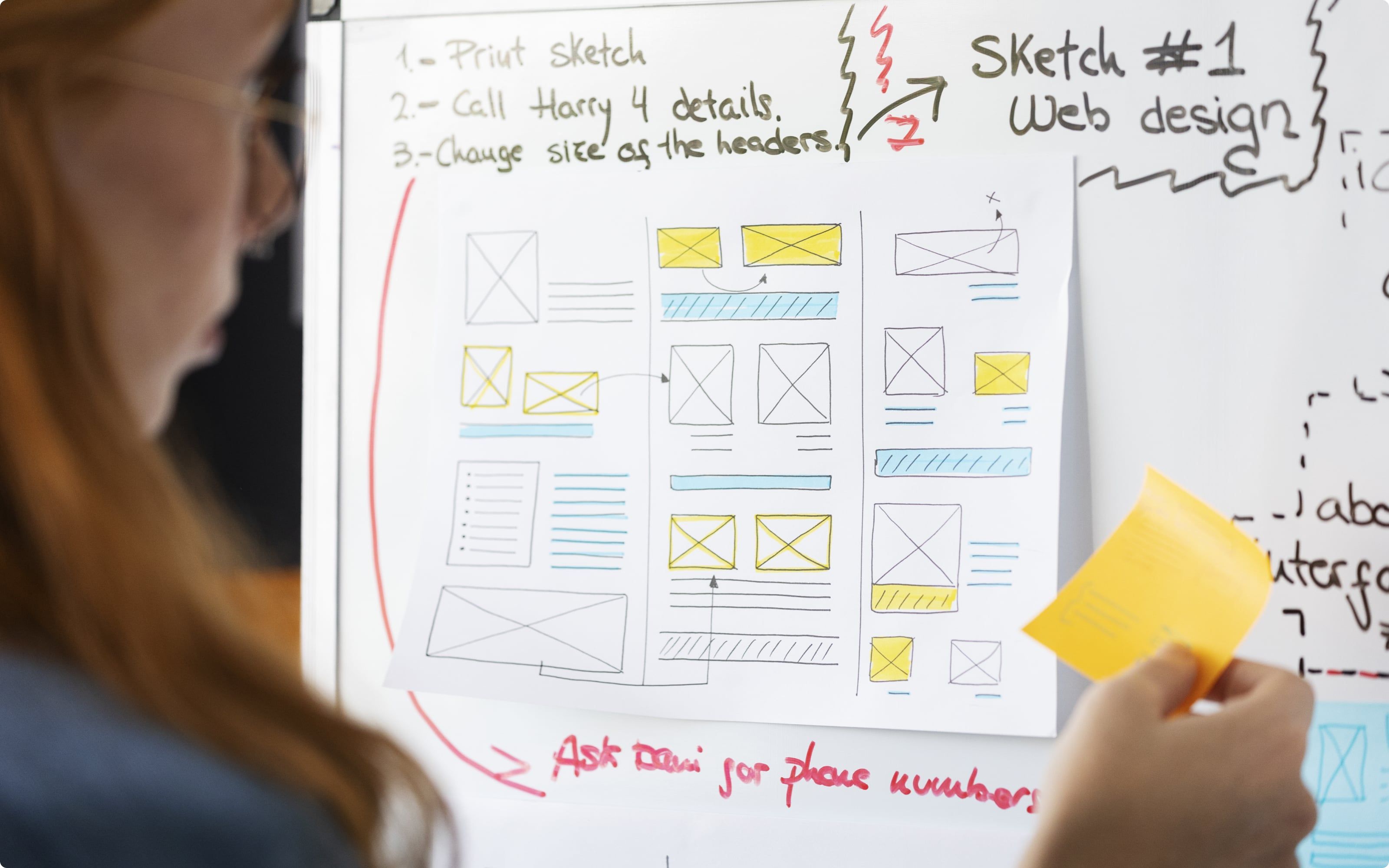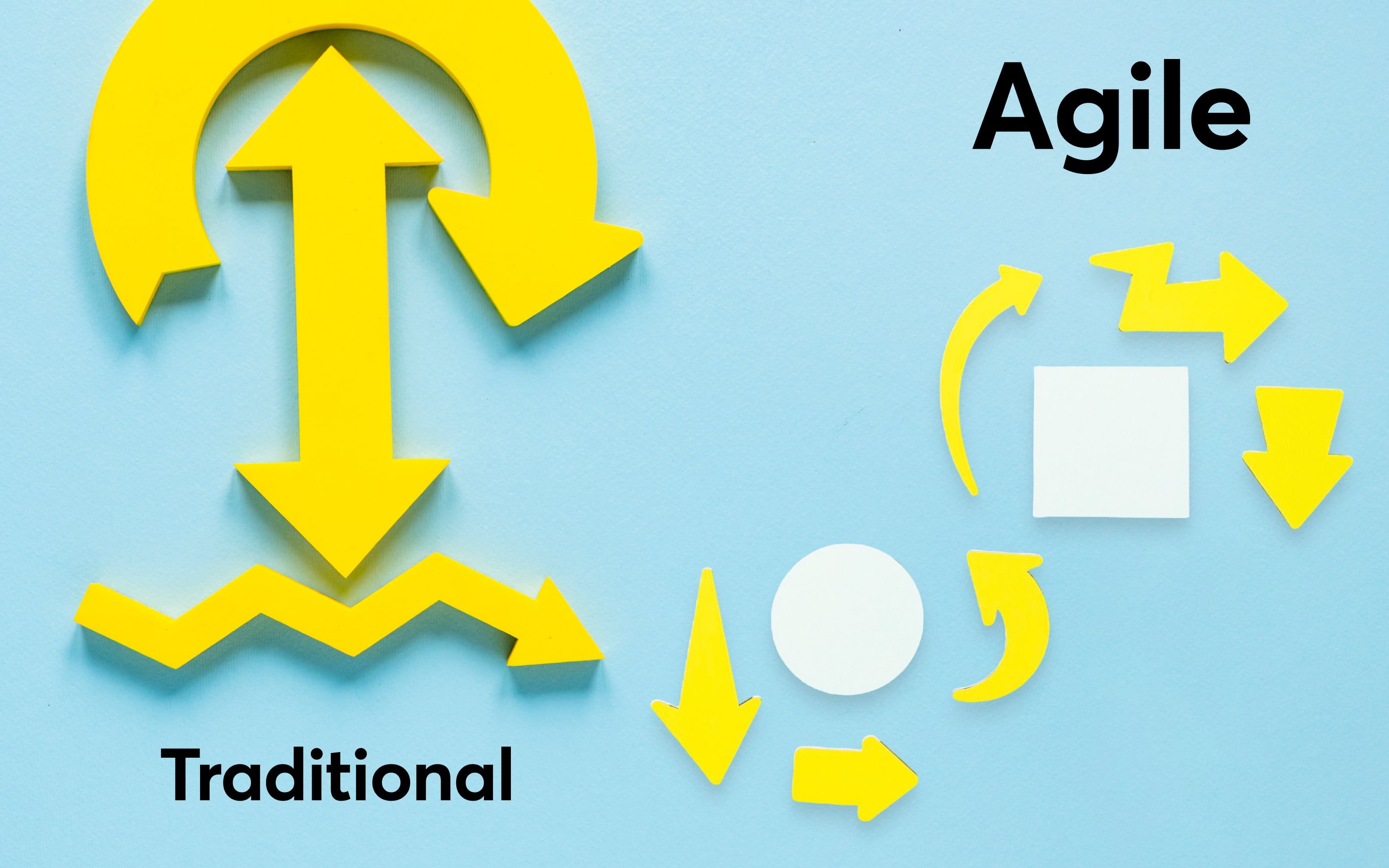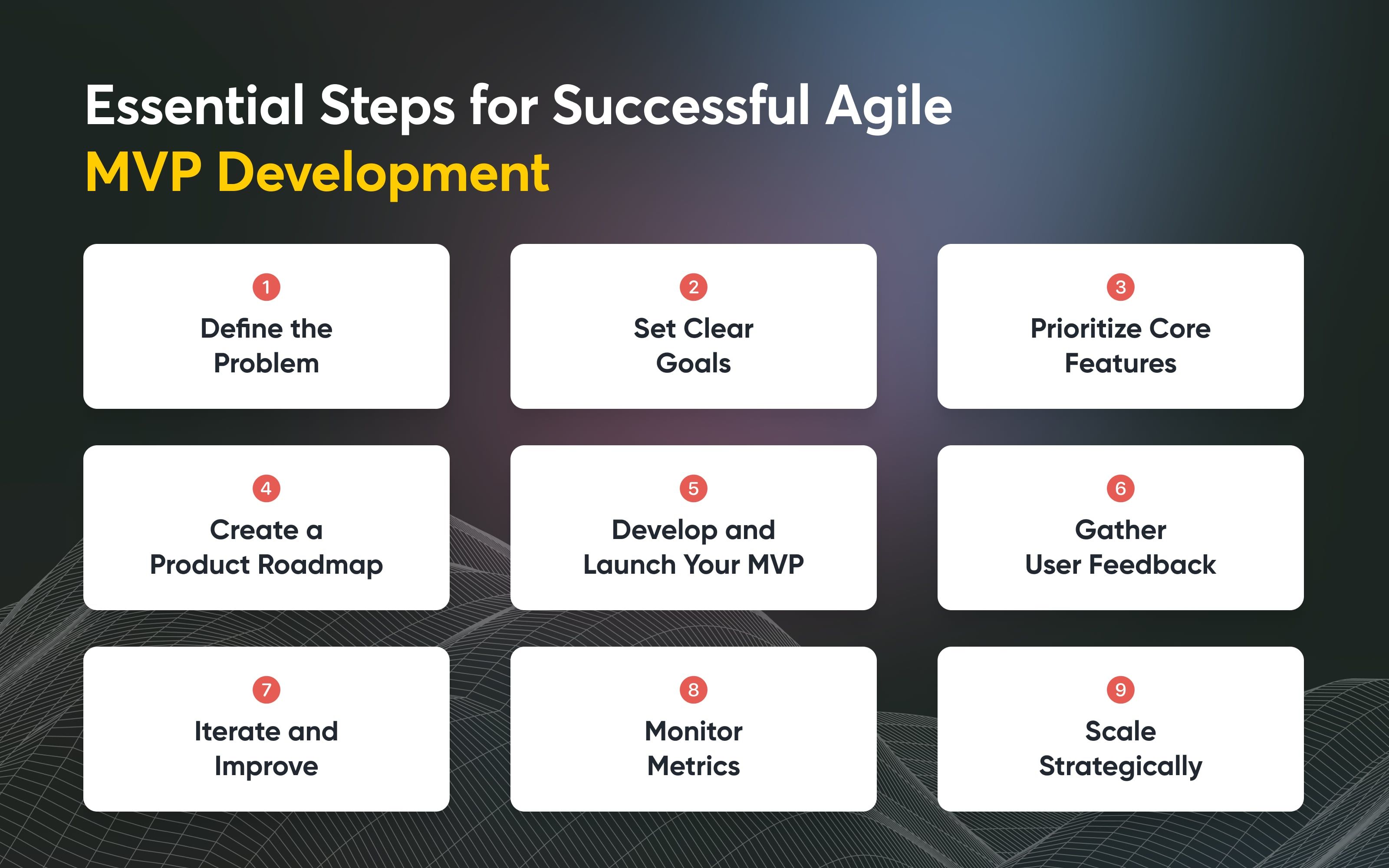Building a Minimum Viable Product (MVP) is a great idea as it helps you validate your idea quickly and transform it into a real-world product. However, following a rigid development process can pose significant challenges and roadblocks in MVP development. A lack of flexibility makes it difficult to adapt to evolving user needs and changing market dynamics.
This rigidity can also lead to wasted resources, as time and money may be spent on features that users don’t need or value. Slow iteration further delays necessary refinements, making it harder to enhance the product efficiently. Additionally, the risk of failure increases since making necessary improvements becomes challenging if the product doesn’t meet user expectations.
To overcome these challenges, startups need to adopt the agile MVP development approach. In this blog post, we’ll learn about agile MVP development, its key benefits, and why startups should adopt this approach. Additionally, we’ll also discover common pitfalls of MVP development and how using agile can help overcome them effectively.
Let’s explore how this methodology can shape your product journey and set you up for long-term success.
Understanding Agile MVP Development for Startups
Agile MVP development is an iterative approach to building a Minimum Viable Product (MVP) that focuses on rapid prototyping, continuous user feedback, and adaptability. Instead of launching a fully developed product, teams release a basic yet functional version to validate ideas and refine features based on real-world insights. This reduces risks, optimizes resources, and ensures product-market fit. Companies like Dropbox and Slack have successfully leveraged Agile MVP development.
Learn: POC vs. Prototype vs. MVP: A Beginner’s Guide
Top Reasons Startups Should Adopt Agile MVP Development
 Designed by Freepik
Designed by Freepik
Startups operate in highly uncertain and resource-constrained environments. To survive and thrive, they must adopt strategies that minimize risk, maximize efficiency, and ensure they are building products that meet real customer needs. Agile MVP development is one such strategy. Below is a detailed explanation of why startups need to focus on Agile MVP development.
1. Minimizing Risk
Startups face significant risks, including financial constraints, market uncertainty, and competition. Agile MVP development minimizes these risks by enabling early validation of product ideas with minimal investment. Iterative development ensures continuous improvements based on real user feedback, preventing costly missteps.
2. Faster Time-to-Market
Using Agile MVP, startups can accelerate their product launch by focusing on essential features first. This allows them to introduce a functional version quickly, gain early adopters, and refine the product based on real user feedback. A faster launch provides a competitive edge and ensures continuous improvements with minimal risk.
3. Cost Efficiency
Startups often operate with limited budgets. However, by following the agile MVP process, startups can allocate resources effectively and avoid unnecessary expenses. Moreover, agile encourages startups to focus on the minimum set of features needed to solve a core problem, reducing development costs. Overall, startups can avoid wasting resources on functionalities that users may not need or want.
4. User-Centric Product Development
Building a product that meets real customer needs is critical for startup success. Agile MVP ensures startups develop a user-centric MVP by gathering early feedback, iterating based on real-world usage, and refining features to enhance usability. By continuously aligning with user expectations, startups can build a product that effectively addresses their customers' pain points, increasing adoption and engagement.
5. Flexibility and Adaptability
Startups must be able to adapt to changing market conditions and customer preferences. Agile MVP development provides the flexibility needed to pivot when necessary. It emphasizes continuous improvement, allowing startups to make adjustments based on user feedback and market trends. For instance, if the MVP reveals that the initial idea isn’t viable, startups can pivot to a new direction without significant financial or time losses.
6. Building a Strong Foundation for Growth
Building an early version of the product with the help of an agile process not only helps startups launch quickly but also lays the groundwork for long-term success. By starting with a simple MVP, startups can build a scalable product that grows with their customer base. Furthermore, agile MVP provides startups with valuable data on user behavior and preferences, enabling them to make informed decisions about future development.
Key Features of Agile MVP Development for Startups
 Designed by Freepik
Designed by Freepik
Agile MVP is the foundation for building adaptable, user-focused, and high-performing products. It ensures continuous improvement through iterative development, rapid feedback loops, and flexible planning. Let’s discover more about this in detail below:
Iterative Development
In agile, work is divided into short, manageable sprints, allowing continuous progress and refinement. Each iteration delivers a functional version of the product, enabling early testing and improvements. This ensures that development remains flexible and responsive to user needs. By consistently evaluating results, teams can make necessary adjustments without overhauling the entire project, making the process more efficient and risk-free.
Customer Collaboration
User feedback plays a vital role in shaping the MVP. Frequent interactions with real users help refine the product to better meet market demands. This continuous engagement minimizes the risk of developing features that don’t add value. It also helps startups quickly identify pain points, address usability concerns, and ensure the final product truly serves its intended audience.
Adaptive Planning
Market conditions and user expectations are constantly evolving, and Agile MVP provides the flexibility to adapt. Priorities can be redefined based on new insights, making the development process more dynamic. Instead of sticking to a rigid roadmap, teams can pivot when needed, ensuring that the final product aligns with current trends, technological advancements, and real-world requirements.
Continuous Improvement
Regular assessments allow teams to optimize workflows and enhance product quality. After every sprint, retrospectives help the team analyze what went well, what challenges they faced, and how they can improve processes for the next sprint. This ongoing refinement process increases efficiency over time, optimizes resources, and improves performance. Therefore, adapting a culture of continuous learning within the development lifecycle helps to deliver a stronger, more competitive product with each iteration.
Cross-Functional Teams
Agile MVP thrives on collaboration between developers, designers, product managers, and stakeholders. Cross-functional teams collaborate to build and refine the product, which leads to improved decision-making, seamless communication, and a holistic approach to problem-solving. Overall, when teams work iteratively, they can deliver value quickly, adapt to feedback, and align the product with user needs.
Rapid Delivery
Speed is crucial in today’s fast-paced market. Agile MVP methodology emphasizes frequent releases, which allows startups to launch their product quickly and gain early adopters. Instead of waiting for a fully polished version, releasing smaller, functional updates helps validate concepts faster. With this approach, startups can ultimately reduce time-to-market and continuously improve based on real-world feedback.
Focus on Quality
Quality assurance is an ongoing process in MVP agile development. Testing is integrated throughout the development cycle rather than being a final step. Moreover, automated and manual testing makes it easier to identify if new features work seamlessly with existing ones. Regular quality checks help detect and fix issues early, reducing technical debt and ensuring a stable, high-performing product from the start.
Discover: From Idea to Reality: 10 Tips for MVP App Development
Agile vs. Traditional MVP Development: Key Differences for Startups
 Designed by Freepik
Designed by Freepik
Below, we’ve outlined some of the key differences to identify how adopting an agile MVP approach in contrast to a traditional approach is beneficial for your startup.
1. Time to Market
Agile Approach: As a startup, speed is everything. By launching a functional version of your product early, you can test the waters and start collecting valuable feedback from users. This approach helps you refine your product while staying ahead of the competition and responding to market needs faster.
Traditional Approach: Delaying your launch to perfect every detail can be risky. It means you’re spending time and resources without knowing if the market truly needs what you’re building. This delay can result in missed opportunities and slower responses to customer demands, which is something no startup can afford.
2. User Feedback
Agile Approach: Early feedback is crucial for startups. Launching an MVP puts your product in front of users quickly. Their insights guide you to refine and improve, ensuring you’re solving the right problems and delivering value faster.
Traditional Approach: Delaying feedback collection until after launch is risky. Significant resources are often spent upfront, only to discover later that the product doesn’t align with user needs. This can lead to wasted effort and costly revisions.
3. Resource Allocation
Agile Approach: In the early stages, it’s crucial to focus on what truly matters. With an MVP, you prioritize essential features, which helps save both time and money. This lean approach ensures you’re investing only in what users really need.
Traditional Approach: Without focusing on what users truly want, you risk spending time and resources on unnecessary features. A traditional approach may lead to building things no one actually needs, which can quickly drain your budget and delay progress.
4. Flexibility
Agile Approach: Startups thrive on being able to pivot quickly. An MVP allows you to adapt based on real-time feedback or shifting market trends. It gives you the flexibility to adjust the direction as needed without getting stuck.
Traditional Approach: Once you commit to a fixed plan, making changes becomes much harder. Non-agile approaches lock you into a path, making it tough to adapt to evolving user needs or unexpected market changes.
5. Risk Management
Agile Approach: The earlier you validate your ideas, the less risk you take. By testing your MVP with real users, you can identify problems and make improvements before investing in full-scale development. This approach minimizes financial and operational risks, ensuring your product meets market demand.
Traditional Approach: Following the traditional approach often leads to poor risk management because it relies on rigid, long-term planning without room for adaptation. Without iterative feedback and flexibility, risks accumulate, increasing the likelihood of failure.
6. Market Relevance
Agile MVP: By launching with a simple, functional version, you ensure your product is aligned with real user needs. You’re building something that addresses actual problems and is highly relevant to your market.
Traditional: There’s a risk of building a product that doesn’t align with market demands if you wait too long. A non-agile approach can lead to features or solutions that customers aren’t looking for, making your product irrelevant to their needs.
Essential Steps for Successful Agile MVP Development

Now, that we’ve learned about agile MVP, it's time to learn the key steps involved in building an MVP by adopting this approach. Steps of agile MVP include:
1. Define the Problem: The First Step in Agile MVP Development
Before jumping into development, take the time to define the problem your MVP aims to solve. This means identifying the specific pain points your target audience faces and understanding their needs.
When you deeply understand your audience, you’re better equipped to create a product that provides real value and stands out in the market. This foundational step is critical for your MVP’s success.
2. Setting Clear Goals for Agile MVP Success
You need a roadmap for your MVP. Set specific, measurable objectives that define what success looks like for this initial version. These goals could include identifying product-market fit, validating a core feature, or proving your business model.
Clear goals ensure everyone on your team is aligned and working toward the same outcomes. They also help you prioritize tasks and allocate resources efficiently.
3. Prioritizing Core Features in Your Agile MVP
Building MVP means prioritizing the core features that solve the core problem and deliver the most value to your users. Ask yourself: What are the core features that directly solve the user's problem? Which functionalities can be added later without compromising the core experience?
This approach also helps users clearly understand your product’s main value proposition. Prioritizing core features ensures your MVP is not bloated with unnecessary elements. Remember, you can always add more features in future iterations once you’ve validated your MVP’s core functionality.
4. Developing a Strategic Product Roadmap for Your MVP
Think of your product roadmap as your development blueprint. Break your journey into clear phases, starting with your MVP and outlining how the product will evolve. This roadmap helps your team stay organized and ensures that your MVP is developed efficiently.
It also allows you to plan future iterations, incorporating new features or improvements based on user feedback. Furthermore, creating a structured plan allows you to set realistic expectations and avoid scope creep, which can derail your timeline and budget.
5. Developing and Launching Your Agile MVP
Speed matters in the startup world. Build your MVP efficiently and get it into the hands of users as soon as possible. The faster you launch, the quicker you can start gathering feedback to refine your product. Don’t worry about creating a perfect product in the first go—it’s about delivering something functional that solves a specific problem.
Early market entry gives you a competitive edge and helps you address user needs sooner rather than later. By launching quickly, you can test your assumptions and adapt your strategy without wasting time or resources on unnecessary features.
6. Gathering Actionable User Feedback for Agile MVP
Once your MVP is out there, focus on gathering feedback from users. This step is critical for understanding whether your product solves their problem and meets their expectations. Encourage users to share their experiences, frustrations, and suggestions. Their insights are invaluable for identifying gaps and opportunities for improvement.
Gathering feedback is the way to build a product that resonates with your target audience. It also helps you prioritize changes for future iterations. Early and consistent feedback loops prevent you from getting off track and keep your development process aligned with real-world user needs.
7. Iterative Improvement in Agile MVP Development
Use the feedback you’ve collected to refine your MVP. Every iteration is an opportunity to fix issues, enhance usability, and add value. This process helps you stay responsive to user needs and continuously improve your product’s appeal.
Iterative development keeps you agile, allowing you to adapt quickly to evolving customer needs and market trends. That’s the reason why embracing a cycle of improvement is the key to you building a product that evolves alongside your users. Remember, perfection isn’t the goal—progress is.
8. Monitoring Key Metrics in Agile MVP
Track performance metrics to measure how well your MVP is performing. Metrics like user retention, engagement, and conversion rates provide a clear picture of what’s working and what isn’t. These data points help you validate assumptions, identify trends, and pinpoint areas for improvement.
Monitoring KPIs ensures you’re making informed decisions rather than relying on guesswork. Metrics also show whether your MVP is meeting its goals and resonating with users. Therefore, focus your efforts on the areas that drive the most impact, ensuring steady progress toward your objectives.
9. Strategic Scaling: Taking Your MVP to the Next Level
Once your MVP has proven its value, it’s time to scale. Use the insights you’ve gained to expand features, improve performance, and reach a broader audience. Scaling isn’t just about adding more—it’s about doing so thoughtfully and in alignment with your goals. While scaling your MVP, Focus on features that enhance user experience or address unmet needs.
Ensure your infrastructure can handle increased demand and keep refining the product based on ongoing feedback. Strategic scaling allows you to grow sustainably while maintaining the quality and relevance of your product. This step sets the foundation for long-term success.
Avoiding Common MVP Development Pitfalls with Agile Methodologies

Developing a minimum viable product comes with challenges that can hinder its success, from poor planning to ignoring user feedback. Agile methodologies help teams navigate these pitfalls by fostering flexibility, collaboration, and continuous improvement. Here's how Agile addresses the most common MVP development mistakes.
1. Focusing on Too Many Features
Pitfall: Many teams overcomplicate the MVP by adding too many features, aiming for a polished product rather than validating core assumptions.
How Agile Helps: Agile encourages an iterative approach, focusing on delivering a functional version with just enough features to test viability. Moreover, agile allows teams to use the MoSCoW (Must-have, Should-have, Could-have, Won’t-have) method to prioritize core features and manage scope.
2. Ignoring User Feedback
Pitfall: Relying on assumptions rather than real user feedback can lead to a product that misses the mark, resulting in poor adoption, wasted resources, and missed business opportunities.
How Agile Helps: Agile promotes continuous user validation through user interviews, usability testing, and A/B testing at different stages of development, ensuring the product meets actual needs.
3. Poorly Defined Success Metrics
Pitfall: Without defined success criteria, teams struggle to measure whether the MVP meets user needs, leading to unclear priorities, ineffective iterations, and difficulty in making data-driven decisions for product improvements.
How Agile Helps: Agile frameworks emphasize setting clear goals (e.g., user engagement, retention) and tracking them through sprint reviews and retrospectives.
4. Lack of Cross-Team Collaboration
Pitfall: Siloed teams hinder alignment between development, design, and business goals, causing miscommunication, delays, and a disjointed product that fails to meet user and business expectations.
Solution: Foster open communication and collaboration with daily standups, retrospectives, and shared documentation, ensuring transparency, accountability, and a collaborative approach that aligns all teams toward a unified MVP vision.
5. Not Pivoting When Necessary
Pitfall: Sticking to a flawed MVP idea despite market feedback wastes resources, delays product-market fit, and prevents teams from making necessary adjustments to meet user needs effectively.
How Agile Helps: Agile enables teams to pivot quickly through iterative learning, incorporating real-time user feedback to refine product direction, improve viability, and minimize resource wastage.
6. Overlooking User Experience
Pitfall: Some teams focus solely on functionality, neglecting usability and design, which leads to poor adoption, frustrated users, and reduced engagement, ultimately impacting product success and retention.
How Agile Helps: Agile promotes user-centered design by integrating UX feedback early in the development cycle. Regular iterations ensure that the MVP remains intuitive and user-friendly.
Partner with Cygnis for Agile MVP Development Excellence
At Cygnis, we specialize in building Minimum Viable Products (MVPs) that help startups and enterprises validate ideas, gather user feedback, and scale efficiently. Our expertise in Agile development ensures that your MVP is not just a prototype but a well-structured, adaptable product that evolves with market needs. With a user-centric approach, we focus on rapid iterations, data-driven decision-making, and seamless collaboration to create high-impact digital solutions.
Our Proven Agile Approach to Building Scalable MVPs
- Discovery & Planning: We define clear objectives, identify key features, and create a development roadmap aligned with business goals.
- Iterative Development: We build and release in short sprints, allowing continuous testing, feedback, and refinement.
- User-Centered Design: Our UX/UI experts prioritize usability, ensuring an intuitive and engaging product experience.
- Continuous Feedback Loops: We integrate user feedback at every stage to adapt and enhance the MVP effectively.
- Scalability & Flexibility: We develop a solid architecture that allows your MVP to scale as your business grows.
- Cross-Functional Collaboration: Our teams work closely with stakeholders, ensuring alignment between business, design, and development.
- Data-Driven Enhancements: We analyze key metrics and iterate based on performance insights to optimize the MVP.
With Cygnis, you get more than just an MVP—you get a strategic partner dedicated to helping you refine and scale your vision efficiently with Agile best practices. Contact us today to discuss your MVP idea and take the first step toward building an innovative user-centric product.
Wrapping Up: Achieving Startup Success with Agile MVP Development
Agile-driven MVP development helps startups build lean, efficient, and market-ready products by focusing on incremental progress, continuous feedback, and adaptability. By refining features based on real user insights, startups can avoid unnecessary complexity and ensure their product resonates with the target audience.
Many successful companies, including Dropbox and Slack, have leveraged Agile principles to iterate quickly and scale effectively. This approach reduces risk, accelerates time to market, and enhances product-market fit. For startups aiming to turn ideas into impactful solutions, Agile provides the flexibility and structure needed to develop an MVP that evolves with user needs and market demands.











